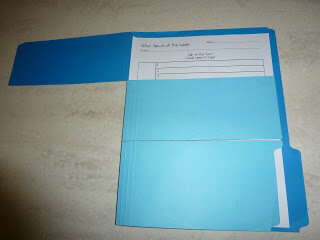Homework Strategies for Students with Learning Difficulties
Homework Strategies
It is no secret that homework time can be a struggle. This is especially the case when a student has a learning difficulty. Homework can be tedious, overwhelming, or boring for a student. Pair that with an underlying struggle and it makes it even harder.
There is good news though! With the strategies listed below, you can help make homework a little less overwhelming and more manageable for your students, meaning that there will be less of a battle!
Set a timer!
Having a concrete ending point can help children maintain attention. Make sure to monitor their attention to task during this time. Each time your child/student appears to be "zoning out" or not attentive to their work, stop the timer until they are ready to refocus.
30/30 is an amazing app meant for adults or older students, but I like the simple user interface and it can help younger students transition to independent time management as an adolescent/young adult. I recommend setting a time for each subject of no longer than 10-15 minutes depending on the needs of the child. After 10-15 minutes finish the problem/question you are on and switch to a new subject or take a quick brain break.
Using a timer is also a great way to teach students to self-monitor their attention. To read more, check out “How Can I Help my Child Pay Attention” here.
Display manageable chunks
For particularly difficult subjects (especially writing or reading for a child with dyslexia or math for a child with dyscalculia) display only manageable chunks. I love this idea from Teach 123 of cutting a file folder to display only one question or problem at a time so that students are not overwhelmed by all that needs to be accomplished.
Give only one step of large multi-step projects
If a long-term project is to be completed, only give one step at a time along with a due date. This will help the student not jump ahead and also keep them organized and on track. Utilizing apps can help older students manage multiple class loads at a time.
Provide a hands-on visual organizer for procedural tasks
This is a great strategy for tasks that are repeated frequently and are generally procedural in nature (or follow a systematic process). Math is a great example of structured tasks that can be organized in this way. Review of written work is another (e.g., Check for Capitals, Check for Organization, Check for Punctuation, Check for Spelling). I chose to type this example but you could also hand-write on pre-laminated sheets with a dry-erase marker for easier swaps of material.
The goal of providing a visual like this is to allow a student who usually needs step-by-step instruction of tasks to work more independently. You can teach a child to become more autonomous by removing steps and asking what was left out, or incorrectly ordering steps and asking for the student to correct them before beginning.
Teach organization skills with use of a planner
Often times managing a planner is not a skill that comes easily to children with executive function challenges (especially those with ADHD). This skill needs to be explicitly taught. Working with your child or student on how to use a planner and determining the best type of planner at the very beginning of the year is really important.
I like to use planners because you can color-code subjects and make sure that all the steps are completed. By placing a planner in the front of a homework binder or placed in a paper protector stapled onto the front of a homework folder teachers can know to check for homework that may have been completed but not handed in.
If you have tried all of the tactics above without improvement, or you just have a gut feeling something else is going on, it might be time to look into an underlying learning struggle. Check out our blog “5 Signs the Homework Battle is Actually Something More” here!
If you are looking for more support for a struggling reader, check out our FREE online training, 7 Steps to Reading Intervention that Works! >>Click here<< to learn more!



